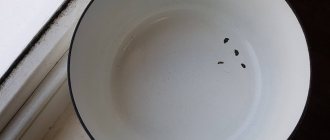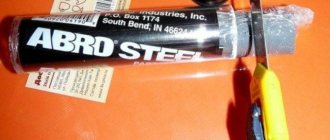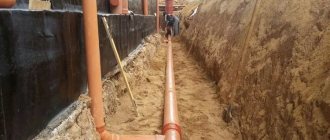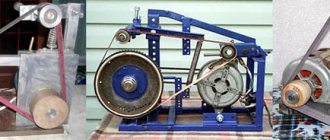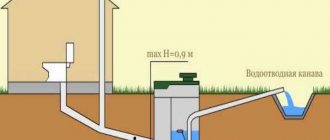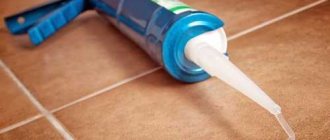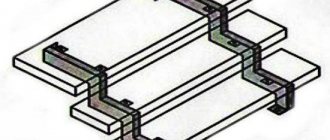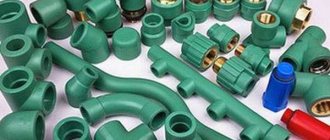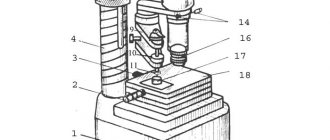Barrels made of plastic and metal are one of the most useful tools in a summer cottage. Gardeners know many ways to use containers, and it’s even more offensive when a hole appears in the side or bottom. You shouldn’t immediately throw away your equipment; there are several options for renovation and repair, as well as using leaky barrels to leave the container to serve for another 20 years.
Methods of using metal barrels in the country
In addition to the standard settling of water, burning garbage and making an outdoor stove, barbecue, there are other options for using useful tools:
- Toilet . This will be a regular “toilet” like a cesspool. Make several additional holes along the bottom and circumference, dig into a hole, lay drainage at the bottom and lower the barrel there. Place a neat structure on top to protect from rain - everything is ready.
- Wash basin . The large capacity will allow the whole family to wash themselves. It is enough to cut a faucet into the resulting hole, install the barrel on a pedestal and attach the sink.
- If you equip the top of the barrel with a seat, you get garden furniture . For stability, a couple of bricks should be placed inside the container.
- Concrete mixer . Very useful for repair and construction work. Place the barrel on its side, build in a mixing mechanism, and you won’t have to spend money on renting expensive equipment.
The popular bookmaker has released a mobile application for Android, you can follow the link absolutely free.
How can you repair a damaged gas tank?
- Self-tapping screw;
- Aluminum rivet;
- Plastic (for plastic gas tanks);
- Cold welding;
- Soldering a tin or copper plate;
- Welding.
Methods for installing holes in a plastic tank
1. The first method is that, depending on the diameter of the hole, you can use a simple self-tapping screw to seal it. In most cases, you can use one self-tapping screw, but ideally it is better to use a rubber gasket that can be cut from rubber, for example, for sealing the holes of wheel tubes or other similar rubber.
2. The essence of the second method is that to eliminate the hole you can use an aluminum rivet with a rivet gun. This option is quite often used when sealing small holes in a gas tank.
3. When eliminating cracks and holes in a plastic tank, you can use soldering. To do this, it is necessary, at best, to select the same plastic from which the fuel tank is made. Next, you need to cut out a plate from this plastic and solder it with a soldering iron to the gas tank so that the plate completely covers the crack.
How to repair a crack in a barrel?
Repairing a crack in the wall or bottom is as easy as shelling pears.
The algorithm is like this :
How to quickly and easily repair a hole or crack in a polycarbonate greenhouse
- cover the crack from the outside with waterproof glue or melted resin;
- put a layer of rubber fabric or a piece of fiberglass on top;
- cover the patch with another layer of glue or resin;
- Also cover the hole area with resin from the inside.
Before work, be sure to remove rust and degrease the metal surface.
Another option:
- cover the crack in the bottom with clay diluted in water - first dig a hole, pour water into it and fill it with clay, and then place a barrel there;
- so that the container stands firmly, place a couple of bricks or stones at the bottom of the hole;
- as soon as the clay dries, a durable layer forms at the bottom of the container, not even allowing water to pass through.
This container will last for a long time.
A hole is definitely not a death sentence: we give the barrel a second life
Reading time: 3 minutes No time?
Water is a very valuable and necessary resource, especially for summer residents and owners of personal plots. You need a lot of it: for drinking, washing dishes, washing and watering. Water needs to be stored somewhere, but not everyone can build a well or buy a large metal container. For these purposes, many people use two-hundred-liter iron barrels of petroleum products, which break down over time. However, do not rush to throw away a container with holes. In today's HouseChief editorial review, we'll talk about how to give an old barrel with cracks and holes a second life.
Read in the article
Restoring a barrel using cellophane
When small holes form, they are sealed with cold welding or universal sealant or window putty. When holes form, cellophane is used.
Procedure:
How to seal a hole yourself and seal a hole in a suspended ceiling
- Take a strip of thick cellophane, preferably in the form of a pipe. Cut the piece to the height of the barrel with an allowance.
- Fold one edge of the film, put newspaper under it and also line the cellophane with newspaper on top.
- Heat the iron, melt the edges so as not to burn holes in the film.
- Cool the cellophane, remove the newspaper and straighten the film - the pipe makes an excellent bag that is inserted into the barrel.
- First, test the bag for the tightness of the joint - pour a little water, if it does not leak, then you can insert it. There are holes, cut off the welded edges and repeat the gluing procedure with an iron again.
When placing the bag in a container, you need to spread the cellophane as tightly as possible along the walls so that there are no wrinkles left. Use it for any purpose, but when taking water from the container with a bucket, you need to be careful not to tear it.
Second life of leaky barrels
Section: Educational program
Writes Anatoly Nikolaevich MOSKALEV, Ekaterinburg
A metal barrel is one of the most useful items on our site. But time takes its toll, and gradually they become unusable. Should I throw them away?
Our dacha specialists confidently say: no!
One of our readers decided to share interesting ideas on how to use an old metal barrel.
The average service life of a barrel is 20 years
In 1982, I bought 10 steel barrels with a volume of 200 liters (inner diameter 54 cm and height 88 cm) to store water for irrigation. They served well at the dacha for 20 years, since every two years I painted them with waterproof paint. But nothing, as they say, lasts forever.
Small holes gradually began to appear in the bottom and on the side cylindrical surface; I sealed them with cold welding and tar. But year after year the holes increased in size and their number grew.
By 2010, all the barrels were completely unusable, no repairs could help them - not the barrels, but the sieve! Suitable only for collecting and burning waste, preparing compost or disposing of it in a landfill.
We use a bag to extend the life of the barrel
The idea was suggested to me by summer resident Yuri Stepanov: “Holes are not at all a reason not to keep water in barrels.” I decided to put this into practice and got a wonderful result. I had to bring the idea to mind myself.
In the store I bought plastic garbage bags - 60 microns, volume 240 liters. It is very important that the volume of the bag is significantly larger than the volume of the barrel, and its perimeter is equal to the perimeter of its outer cylindrical surface (if more, this is welcome; if less, then no more than 2-3 cm - polyethylene is elastic and stretches a little). I think you guessed it: the water will be stored in a bag, and the barrel should only serve as a supporting frame for it.
At first I wanted to finish writing here, but after thinking about it, I decided: no, I need to convey some nuances, then you will save both time and nervous energy. The technology is simple.
To avoid punctures
We clean the inner surface of the barrel from sharp peelings of paint and rust that can pierce a plastic bag.
We do this using a metal brush, or even better, a metal frame used to shave off the weeds (just use the frame mounted on the handle). And don't overdo it! Carefully check the inner surface of the barrel with your palm: if there are no sharp spots, just clean it. Any non-sharp protrusions do not matter. There is no need to paint the inside of the barrel - do not waste money, effort and time.
If you can’t smooth out sharp protrusions, or you want to insure yourself against troubles in the future, there is such a move: from thick polyethylene (cardboard, plastic, etc.) we cut out a circle whose diameter is equal to the inner diameter of the barrel or even slightly larger. Place the circle on the bottom of the barrel. We cut out a rectangle, the width of which is equal to the distance from the bottom of the barrel to its upper edge, and the length is slightly greater than its perimeter. We roll the rectangle into a cylinder, overlap the edges and fasten them along with threads. We place the cylinder in the barrel. The circle and cylinder will reliably protect the bags from punctures!
One is good, but two is better
For strength, it is better to use two bags. We put one into the other so that the corners on the bottom match. We place the bags on a flat surface (table, floor) and expel the air from them, stroking them with our palms from the bottom to the top edge. Of course, some air will still remain, but it doesn’t matter.
We align the upper edges and use narrow tape (8-15 mm) to fasten the bags over the edge along the perimeter along their upper edge every 10-15 cm. The length of the fastening adhesive tape is enough to be 4 cm. Now the interlocked edges of the bags will not move relative to each other, and we will get a double package.
Do not seal the edges of the bags along the entire length - this is very important, and you will appreciate it later, since the air remaining between the bags will be able to freely escape when water is poured into the inner bag.
https://www.youtube.com/watch?v=rJgybMwzyV0
Place the double bag into the barrel. We bend its upper edge (5-15 cm) onto the outer surface of the barrel along its entire perimeter.
If the length of the bag allows, it is better to bend the edges as much as possible, but make sure that the bag in the barrel does not hang in the air, as the water will simply tear it apart.
To prevent the bag from sliding to the bottom of the barrel when we start pouring water into it, you need to attach the bent part of the bag to the outer surface of the barrel with wide tape (60-80 mm). This is a very important operation, it is better to do it together.
For example, a husband places a barrel obliquely on a beam, round block or box and slowly turns it around its axis, and at this time the wife, slowly, glues the bag with tape: half the width of the tape to the bag, the other to the barrel. The operation requires care; the tape must lie flat and tight, without swelling or distortion. Of course, you can perform this procedure alone, but it’s difficult.
In the photo next to me is a barrel, which I wrapped with tape absolutely alone (before this, the operation was carried out together with my wife as I described above). Look how great I did! And you, dear readers, I am sure, are incomparably more talented than me, you will do even better!
Air vent hooks
And here’s another very serious nuance! A lot of air remains between the double bag and the barrel body. You will be tortured to delete it. And if you do not remove it, the poured water, gradually pressing the bag against the barrel, will squeeze the air upward: the bag will swell, and since there is no way out for the air, as a result it may tear, or the curved edge of the bag together with the tape will pull the water inside the barrel, which is what happens. we had at first. The bag falls to the bottom, water flows out through the holes. Goodbye idea...
Closing the crack
If cracks or holes appear in the bottom or side walls of the barrel, they can be repaired in several ways. It is necessary to coat the crack on the outside with melted resin or waterproof glue. Then you will need rubberized fabric or fiberglass, which is used in construction work. We place a small piece on the molten resin, and coat it with another layer of resin or glue on top. To make the patch more reliable, exactly the same operation is performed on the inside of the barrel, but before that the area being repaired must be thoroughly cleaned of rust.
The leaky bottom of a metal barrel can be sealed with clay diluted in water. To do this, in the place where the container is expected to stand, you need to dig a small pit, which is subsequently filled with clay (you can knead the clay directly in this pit). After this, we install the barrel in the pit and place some weight inside so that the barrel fits tightly into the pit. Once the clay dries, it forms a durable layer through which water will no longer seep through. Having installed the barrel in this way, you will be able to use it for many more years.
Methods for restoring a car floor
Let's look at effective methods of how to repair a hole in the bottom of a car without welding for a long time.
Fiberglass and epoxy patch application
To fill the void in the bottom of the car with fiberglass material, you must:
- Prepare the metal, remove rotten parts, treat with a converter.
- Clean the surface from traces of dirt and grease.
- Cut several pieces of fiberglass. The first should exceed the size of the hole by 25-35 mm, the second by 35-45 mm, the third by 55-65 mm. For larger holes, 4-5 pieces of material may be needed.
- The patching begins by soaking the first patch with epoxy glue. The piece is carefully placed on the hole, the edges are smoothed with a roller or brush.
- The remaining fiberglass fragments are glued one by one. It is important to saturate the material well with resin. This will prevent moisture from seeping between the layers and destroying the adhesion of the glue.
How to fix a garden hose, an old barrel and get rid of mosquitoes: tricks from Homius
A dacha is not only about relaxation, but also about running a household plot. Each owner has interesting and useful secrets and ideas in his piggy bank, based on his own or borrowed experience. They help to cope with emerging problems and difficulties with a minimal investment of money. The editors of Homius suggest learning a few more tricks that will certainly be useful to all summer residents not only at work, but also on vacation.
The pressing problem is repairing the watering hose
The hose begins to leak at the most inopportune moment, most often this happens after winter storage. There is not always a spare one at the dacha, and there may not be glue on hand. There are several ways to repair it, choose the one that is more convenient for you.
Method 1
- a small piece of rubber measuring 6x20 cm, suitable for a bicycle tube;
- a small piece of wire;
- wire cutters
In place of the hose leak, you need to wrap rubber with slight tension and secure it with wire on both sides.
PHOTO: zen.yandex.ru The width of the patch should completely cover the holes
Method 2
At the dacha, it is better to always have a fitting and a couple of clamps in reserve. This option is suitable if the hose is leaky in 1-2 places. If there are more leaks, it is easier to buy a new one.
The repair procedure is as follows.
- Cut off the parts of the hose with holes.
- Install a clamp on one end of the hose.
- Insert the fitting into the hose and secure it with a clamp.
- Repeat the same steps on the other side.
PHOTO: buildercamp.ru The clamp must be the right size
PHOTO: buildercamp.ru This hose will last for more than one season
How to quickly get rid of mosquitoes
First, midges, then mosquitoes do not allow summer residents to work or relax in peace. Chemistry is not always at hand, and it only helps for a short time. There is one recipe that works 100%, in addition, it is absolutely safe.
You need to fill a bunch of fresh or dry wormwood with 1 liter of water and place in a water bath for 10-15 minutes. Then cool, strain and lubricate the skin with the infusion. In addition, you can simply spread the grass in the room so that insects do not bother you at night.
PHOTO: mirtesen.ru Not a single mosquito or midge will fly close to a person
How to repair a barrel or bucket
Do not rush to throw away a metal barrel if it has holes from rust. There is an old but very effective remedy - cannon lard or pushsalo. You can buy it in auto stores, and it is suitable for ferrous and non-ferrous metals. In appearance, it resembles thick grease and is sold in small containers.
The procedure for processing a barrel or bucket is as follows.
- First you need to clean off the rust.
- Take a small piece of pushsal in your hands and knead it.
- Seal the hole in the container; the layer thickness should be about 6 mm.
- After this, the barrel can be used immediately.
You can use a pushsal to seal any holes in metal; after repair, the container will last at least five years.
Repair methods
To effectively repair a chip or crack in a cast iron pipeline, it is necessary to take into account the condition of the structural element itself and the size of the defective area. Repair is possible when a leak is detected at the junction. Also, a complete replacement of pipes is not necessary if the damage is not too large.
Repair at joints
To eliminate a leak at the junction of individual elements of the sewer system, it is necessary to seal the resulting crack. To do this, follow simple instructions:
- The sewer system is completely shut down.
- The joint is dried using a hair dryer or rag.
- The connection between the pipes is cleared of cement and packing.
- The gap between the pipes is minted using a special plumbing winding made of flax.
- A crack in a cast iron sewer pipe in a toilet is sealed with a mixture of PVA and polycement.
- It is allowed to begin operation of the sewer system one day after completion of repair work.
You can also seal a hole at the joint in a sewer pipe using epoxy resin, liquid rubber or glass, or waterproof glue. When using silicone sealant, operation of the system can begin after 3 hours.
Sealing holes
Small holes in the sewer system pipelines can be eliminated using the following materials:
- Rubber bandage. The material helps to temporarily close the hole in the pipe. The pad is fixed in the desired position using copper or aluminum wire.
- Gauze. Wrap the problem area in several layers, and then cover it with epoxy resin or cement mortar.
- Stub. Made in the form of a wooden wedge. It is not made too long, as this may cause clogging of the system. The plug is driven in at the location of the hole, wrapped with gauze on top and impregnated with epoxy resin.
A few words in conclusion
A hole or crack in a metal water barrel is not a death sentence. Using the tips above, you can easily give the container a second life. As a last resort, if the barrel cannot be revived, it can always be used as a garbage container. If our information was useful to you, please rate the article and express your opinion in the comment form. Or maybe you have your own options for barrel repair? Share your experience with us.
